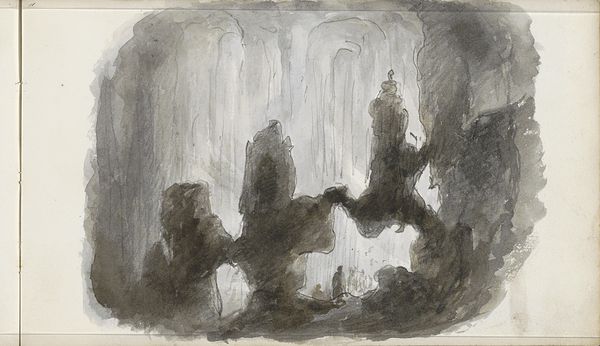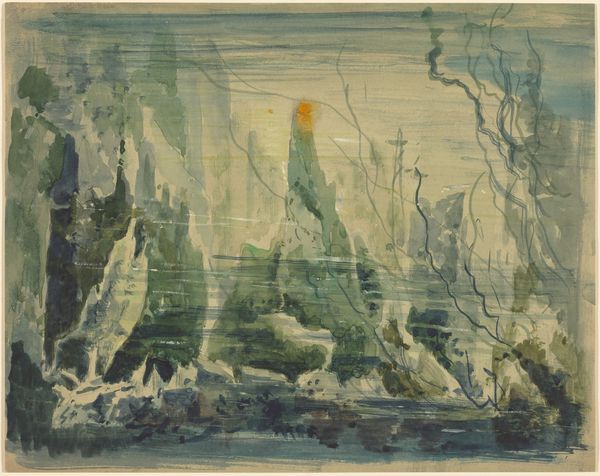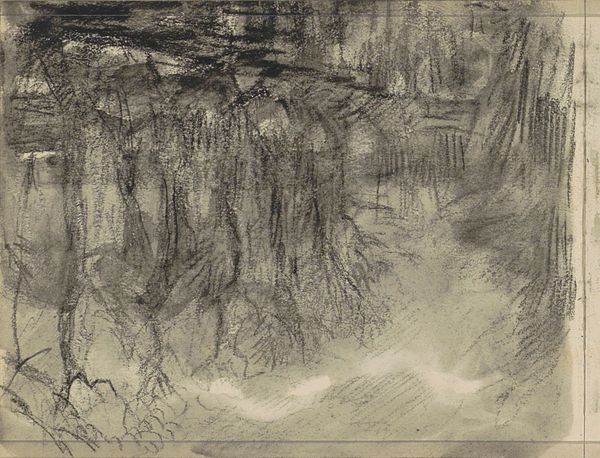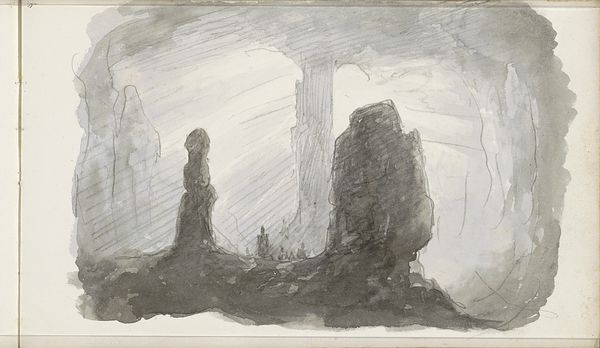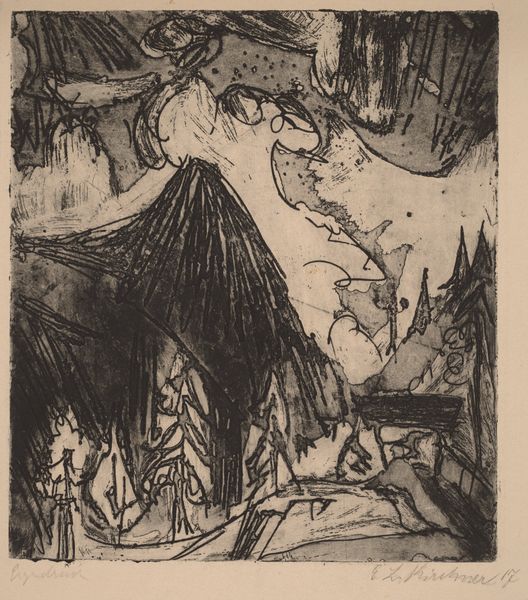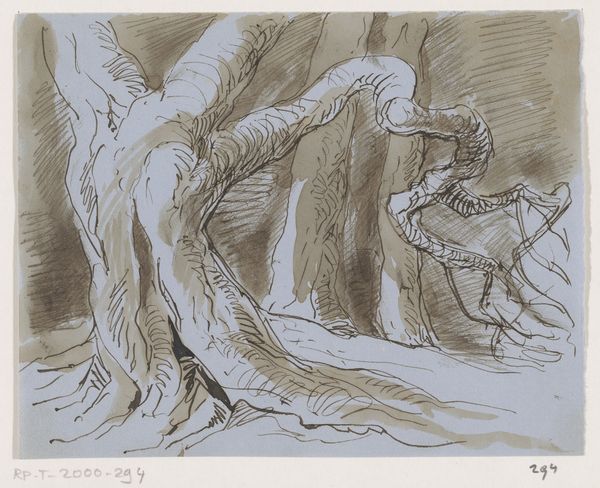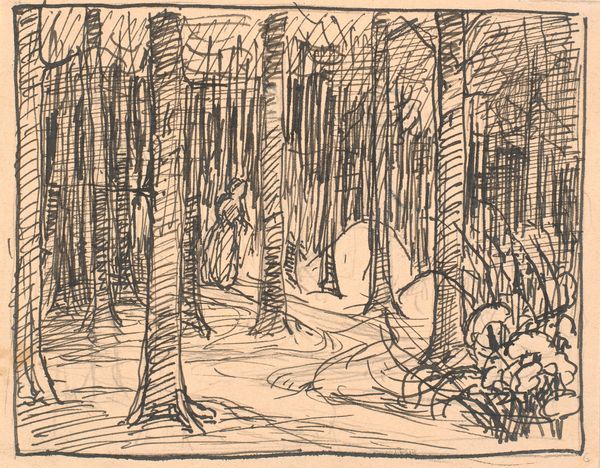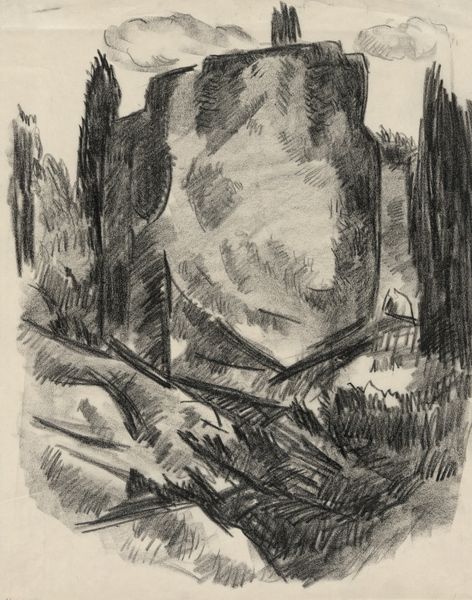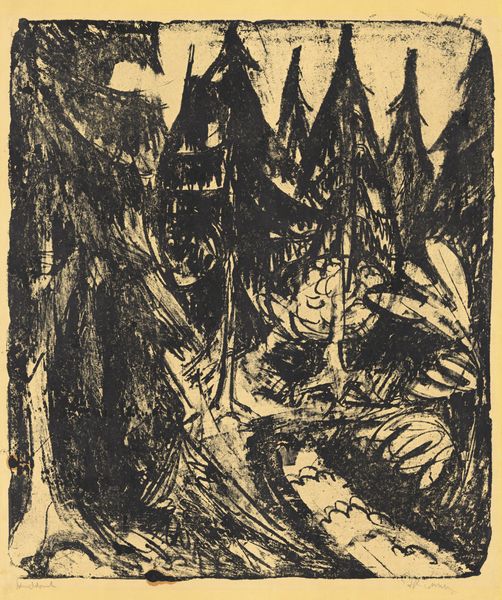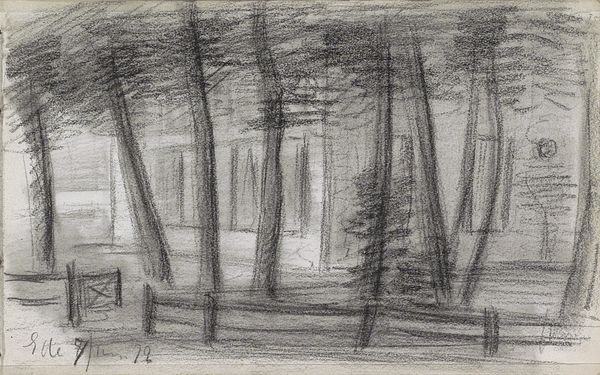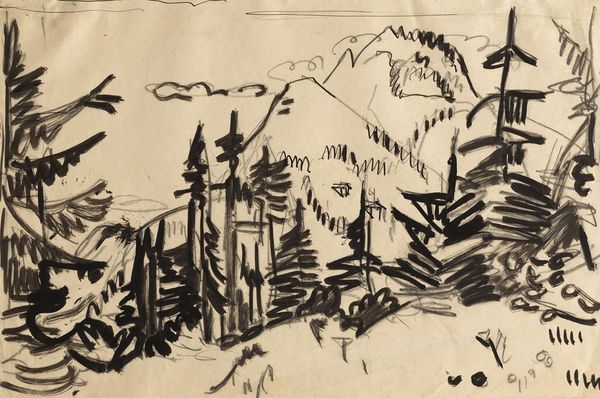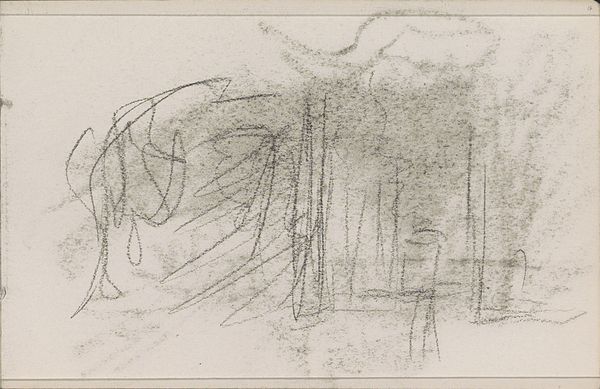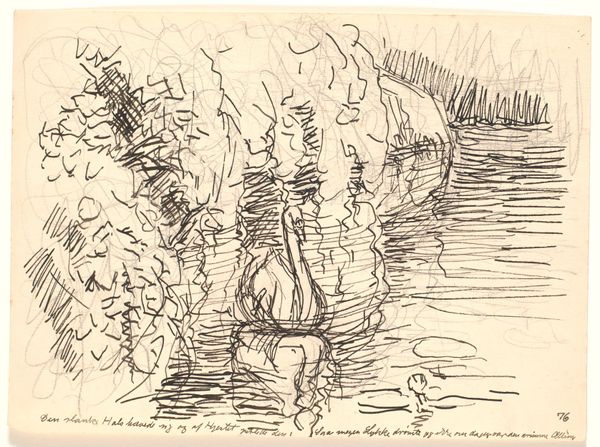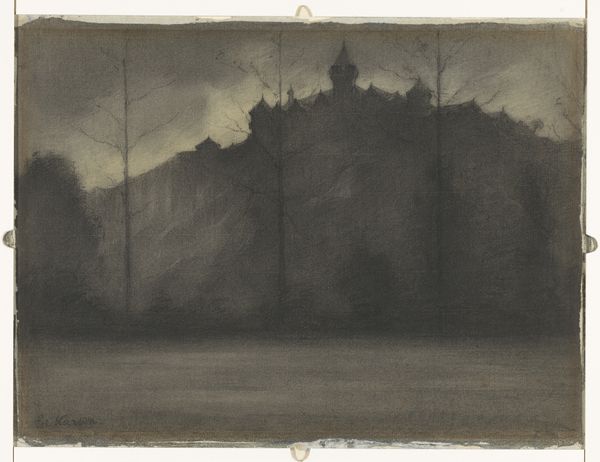
drawing, lithograph, print, ink
#
drawing
#
ink drawing
#
lithograph
# print
#
landscape
#
figuration
#
ink
#
expressionism
#
line
#
symbolism
Dimensions: 313 mm (height) x 400 mm (width) (bladmaal)
Editor: Edvard Munch’s "Towards the Forest," created around 1908-1909. It's a lithograph and ink drawing currently housed at the SMK in Copenhagen. The heavy use of ink makes the forest feel oppressive, almost suffocating. What can you tell me about the way Munch used these materials here? Curator: I see this print through the lens of its production, specifically the consumption and labor interwoven within the image’s making. Consider the paper, ink, and printing press used. The choice of lithography – a relatively accessible printmaking technique at the time – suggests an intention to circulate the image widely, making it more easily consumed by the public. How does this intended consumption impact your reading of the “oppressive” forest? Editor: Well, if it was meant for mass consumption, perhaps the oppression isn’t just a personal feeling, but something Munch wanted to convey about society's relationship with nature at the time? Curator: Exactly! Think about the Industrial Revolution—the intense extraction of raw materials and exploitation of labor. This forest, rendered in mass-producible ink, might represent a critique of that exploitation. The very act of depicting a forest *using* industrial materials creates a tension. What kind of labor do you imagine went into this piece? Editor: I hadn't considered the labour! The lithography would involve skilled craft, preparing the stone, applying the ink... I guess it's easy to separate the 'art' from the making. So the “oppression” I initially sensed is also tied to the means of its making? The material processes implicate society, not just Munch’s inner feelings. Curator: Precisely. It compels us to examine not just what the image *represents,* but also how its existence is inherently bound to broader material and economic forces. Editor: This definitely offers a deeper, more grounded appreciation than just seeing it as another landscape! Curator: Indeed. Examining art through its materials opens up exciting avenues for understanding its complex relationships to the world.
Comments
No comments
Be the first to comment and join the conversation on the ultimate creative platform.
